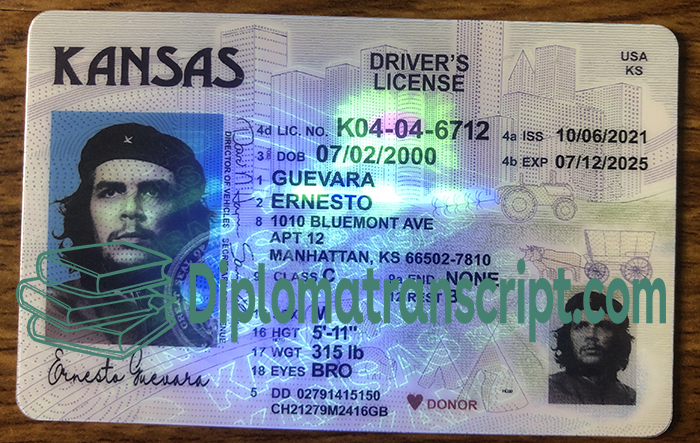
Buy a Kansas driver’s license. Order a Kansas ID. Kansas driver’s licenses contain machine-readable elements (barcodes, magnetic stripes, or QR codes) that allow for quick verification by law enforcement, businesses, and government agencies. Below is a breakdown of how scanning works and what data is encoded. How to make a fake ID?
1. Scannable Elements on a Kansas License
A. Barcode (PDF417 or 2D Barcode)
Location: Back of the license.
Encoded Data:
Full name
Date of birth
License number
Address (sometimes)
Expiration date
Restrictions (if any)
B. Magnetic Stripe (Optional)
Stores similar data in a swipe-readable format (used in some older systems).
C. QR Code (Newer Licenses)
May link to secure verification portals for businesses/government use.
2. How to Scan a Kansas Driver’s License
A. Using a Barcode Scanner
Retail, banks, and bars use PDF417 scanners to verify age/identity.
Apps like “Barcode Scanner” (Android/iOS) can read basic info (but may not decode all fields).
B. Mobile Scanning (For Digital Copies)
Recommended Apps: Adobe Scan, CamScanner, or state-approved verification tools.
Steps:
Take a clear photo of the front and back.
Ensure the barcode is legible.
Save as a PDF/encrypted file for security.
C. Law Enforcement & Government Scanners
Police use advanced readers that decode full license details + check for fraud.
3. Security & Fraud Prevention
Kansas licenses include:
Holograms (ghost images)
UV ink markings (visible under blacklight)
Microprinting (tiny text to prevent forgery)
REAL ID licenses have a gold star indicating federal compliance.
Businesses must follow privacy laws when storing scanned ID data.
4. When Scanning is Required
Age verification (alcohol, tobacco purchases).
Banking/financial services.
Car rentals & hotel check-ins.
Employment/background checks.
5. Kansas Mobile Driver’s License (mID)
Kansas offers a digital license via the “myID” app (for approved use cases).








 Find Answer Here
Find Answer Here